Data Modelling for Databases
Seeking assignment help UK for students? Native Assignment Help is here to alleviate your academic burden. With our user-friendly platform and round-the-clock support, getting top-notch assignments has never been easier.
1. Relational Schema of the 9 entities in the ER diagram
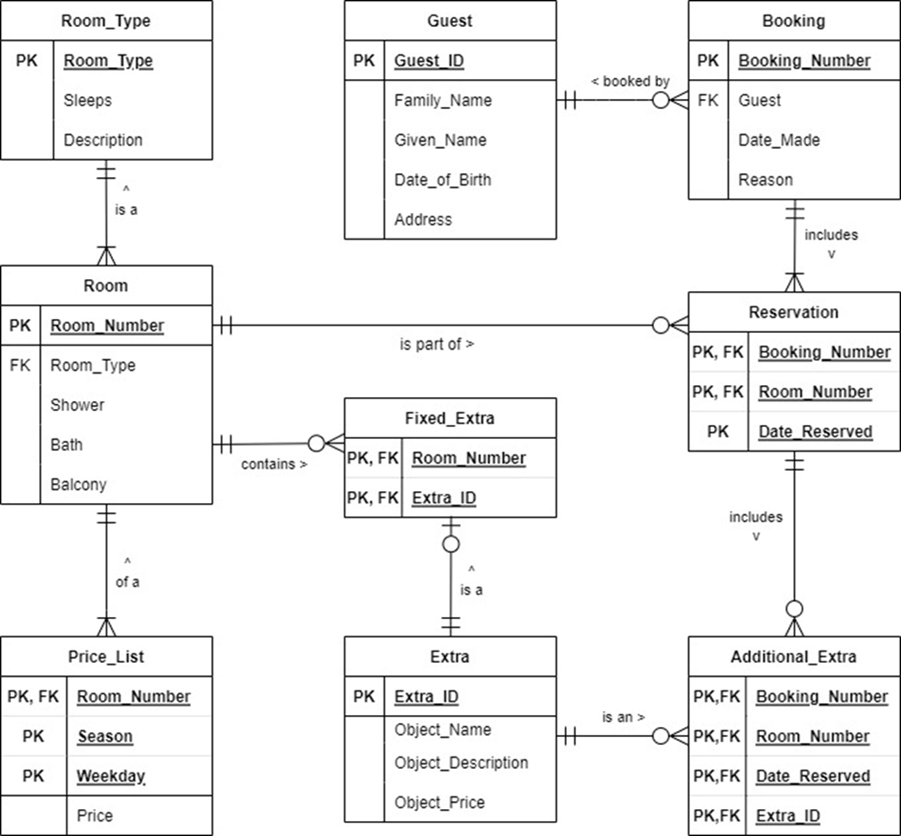
Figure 1: ER diagram of the nine entities
- RoomType: (Room_Type, Sleeps, Description)
- Guest: (Guest_ID, Family_Name, Given_Name, Date_of_Birth, Address)
- Booking: (Booking_Number, Guest*, Date_Made, Reason)
- Room: (Room_Number, Room_Type*, Shower, Bath, Balcony)
- Fixed Extra: (Room_Number, Room_Number*, Extra_ID, Extra_ID*)
- Reservation: (Booking_Number, Booking_Number*, Room_Number, Room_Number*, Date_Reserved)
- Price List: (Room_Number, Room_Number*, Season, Weekday, Price)
- Extra: (Extra_ID, Object_Name, Object_Description, Object_Price)
- Additional Extra: (Booking_Number, Booking_Number*, Room_Number, Room_Number*, Date_Reserved, Date_Reserved*, Extra_ID, Extra_ID*)
Structure of the relational schema statement of the hotel booking system
The system done here is mainly based on the database management in the SQL cases in relation to the hotel booking system parameters. The hotel booking system chooses a hotel with proper bed systems.
According to the Asimopolos et al. (2020), the division in the relational statement are stated according to the entity demand cases but in relation within the hotel management case. The ERD diagram is drawn and processed according to the hotel room specifications in different entities with related key sets. Here, all the relational schemas are written according to the 9 entities as specified in the above ER diagram. The hotel management cases explore the database assignment query cases in light of additional relationship methods (Fedko, 2019).
The pattern of writing relational schema statement is as follows:
Employee (entity) (Employee_Number, Name, Address, Department*) [attributes in brackets with primary and secondary key]
The structure of the relational schema statement is followed and the 9 schema statements in connection with the 9 ERD cases are written to achieve proper table structures. The hotel management focuses on the room type, Guest, Extra, booking, Booking, Room, and much more. There can be more than entity classes in response to the relational key constraints. The arrangement of the primary keys and the secondary keys have been considered for perfect table deployment cases. The structure of writing relational schema classes are done in accordance with one or more data set keys in repetition. There are limitations in the tuple formations of the SQL database due to hotel management cases.
The entity schema table in the follows all the attributes and shapes the in the SQL database table like: Create Table (Body with attributes, Body with attributes)
The above case table structure is automatically created in the formation of the database entity formulation where the hotel attributes are counted well.
Addition of attributes in the SQL tables
The perfect addition of the SQL table structures as per the constraint values and the key connection is important for table formation. The product of all the captivity processing is required highly for necessary data updation and deletion.
As per the opinions of the author Graser (2018), the table structures carry out important data processes regarding the hotel room specs and pointers in individual cases. The private table updation in case of the 9 entities are ruled out in favor of the correct data types for figures. The NULL values are properly added in the light of the justified value pointers as the proper test cases are not updated as per the field values and normal schema lines.
Basically, there are proper fault lines in accordance with the proper data points in the hotel management ERD as the underlying variables are essential for the separate design of the SQL chart (Han et al. 2019).
The correction, addition and proper sequencing of the data tables is needed for supporting the variable cases of the relational schemas in the assignment. The attributes based on the entity derivatives are known highly for proper endurance in the ERD pattern. The attribute casing in the hotel management datasets are one of the most difficult tasks for which every column in the SQL work chart denotes perfection in the datatype allotting.
The attributes can be or cannot be enforced according to the linear justificative method on the aligned data values and numbers as per the entity content type. If there is no null value, the attribute can take 0 value for each data assigned, otherwise a random comment type is implemented on the table. The variable position in case of the hotel data pointers engage the perfectualization process in the long run as there are no requirements of the 9 schematic representations.
Design process of the SQL table
The variable processing in the likewise cases of the hotel management issues surges up to the respective data evaluation purposes. The entity targeting of the required ERD processes are crucial for the 9 schema descriptions.
As per the evidentiary statements of the author Hobbs et al. (2020), there is a change in relation to the tuple case formation of the hotel selection and the room data values. The ERD process is having a slowed connectivity as per the predictive value segregation. The process development in the case spaces around the SQL database design undergoes changes in the relational data combination (Petrova et al. 2019).
There is minimality in the literal statements of the variable numbers as if there are no pointers for database allocation. The SQL developer produces the committed changes as per table data made using the “CREATE TABLE” statement because the table pointers are responsible for clean and transparency in schema behavior. The design in the database values encodes certain comment types according to the dependency annotation in the hotel management data diagram. The primary and the secondary key changes the overlying tuple cases in tertiary differences of the database modeling due to the productivity rolling in constraints.
In contradiction, the author Putnaergle (2020), the commanding upgrades in lieu of the allover database cases are tested to see that there are any type of similarities for dependency conflicts. The tables are implemented in reference to the “column” sections in the SQL database workbench that shows the overlaying structure of the ERD entities in reference to the previous dataframes. The columns are variably described as the long term schedules in the undergoing modeling changes as per the data type specification. If the relational schemas can obtain total ERD dependence, then the database connects the schedule accordingly due to the network sequencing process in the chart workbox.
2. Table Structures of the nine relational schemas from the ER diagram
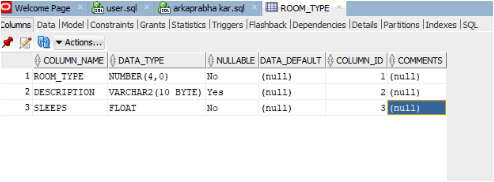
Table 1: Column specification table of the first schema of the ERD
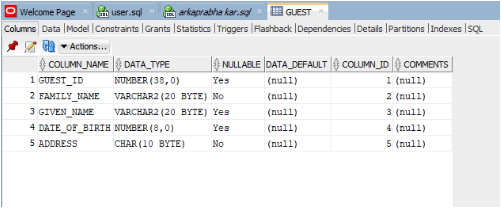
Table 2: Column specification table of the second schema of the ERD
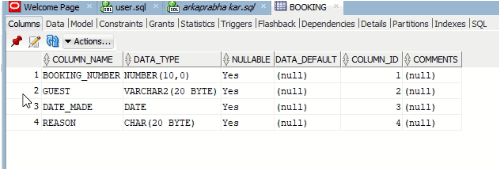
Table 3: Column specification table of the third schema of the ERD
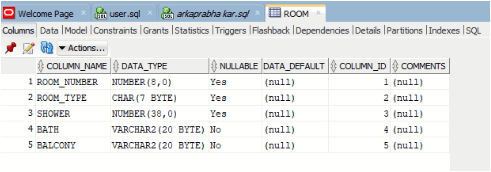
Table 4: Column specification table of the fourth schema of the ERD

Table 5: Column specification table of the fifth schema of the ERD

Table 6: Column specification table of the sixth schema of the ERD

Table 7: Column specification table of the seventh schema of the ERD

Table 8: Column specification table of the eight schema of the ERD

Table 9: Column specification table of the ninth schema of the ERD
Discussion
In the hotel case study, they used the oracle databases to create the survey of the case study. In the UH Oracle corporation there are the operations about the database management systems. That is the array of the databases of the hotel case study in the oracle corporation.
SQL and Database invention
The SQL programming Language, which is more efficient to create databases, is used in the database management systems. This SQL was first developed by IBM in the year of 1970. They are not the only ones who invented single handedly. They invented the SQL language with the Oracle Corporation in the same year. After that SQL languages has many extensions including IBM Corporation. Microsoft has taken the partnership of the Oracle Corporation for the extension. The database was invented in 1960 which was 10 years before the invention of SQL.
Then the idea of the database was first proposed. To develop the database the researchers maintained a management system which was called database management system. In there the whole data is arranged in a proper disciplined
array, which is called the stack.
SQL with DBMS
In the era of IT alias information technology the DBMS or the database management system is maintained by the SQL software, because this software shows the eligibility to create databases smoothly to the database management systems. In the SQL language or the structured query language are very efficient languages for databases. This is used to make the structure and modify the database. If we go deep into this kind of language then we can do some kind of work in that language.
Here we can modify the table & the index structure of a selected database. Actually this software works in the array database of the pc or any kind of system (Samuelsen et al. 2020). This uses the stack of the system to enter or delete the data. But one facility is good where we can retrieve the data from the database.
In the structured query language it takes command from the user to execute the data in the stacks. If we command to change the data, then it changes the databases stake in the system as well as the servers.
SQL Oracle Developer
In the Oracle Corporation Software this SQL language or the structured query languages uses the script where the code or the command have to write. Then it compiles or executes the code on the oracle software by the SQL Assignment compiler. After compiling it inputs the data to the stack of the oracle software’s server.
After this phenomenon there will be the database window on the screen. In the database window there will be the rows or columns of the data. The number of rows and the column varies with the data the user has given.
As per the opinions of the author Turčínek et al. (2021), the database tools use a stack, so there are two conditions like the stack overflow and stack underflow condition. In the stack overflow condition, there is the full storage of data and in the stack underflow condition there will be nil data in the storage.
The usage of the Oracle SQL developer for creating table structures in reference to the 9 schema entities in the ERD discussed provides sufficient information and also ensures the database modeling in a proper standard. The changes in table creation process is a substantial one as the data variables have to be in the correct sequence type provided that the entry comment data can be NULL or NOT NULL.
Reference List
Journals
Asimopolos, L., Asimopolos, N.S., Niculescu, V.C. and Asimopolos, A.A., 2020. Quantification of Geological/Geophysical/Geochemical Databases for the Modelling of Geothermal Water Structures.Smart Energy and Sustainable Environment, (1), pp.21-28.
Fedko VV., 2019. Databases: syllabus of the academic discipline for the Students Field of knowledge 12" Information Technology" of the first (bachelor’s) level.
Graser, A., 2018. Evaluating spatio-temporal data models for trajectories in PostGIS databases.GI_Forum–Journal of Geographic Information Science, pp.1-2018.
Han, T., Rukhlov, A.S., Riddell, J.M. and Ferbey, T., 2019. A skeleton data model for geochemical databases at the British Columbia Geological Survey.British Columbia Ministry of Energy, Mines and Petroleum Resources, pp.125-135.
Hobbs, V.J., Pigott, D. and Toohey, D.P., 2020. abstraction modelling: a pattern language for databases. I n: 14 th Australasian Conference of I nformation Systems, 26-28 November, Perth.
Petrova, E., Pauwels, P., Svidt, K. and Jensen, R.L., 2019. In search of sustainable design patterns: Combining data mining and semantic data modelling on disparate building data. InAdvances in informatics and computing in civil and construction engineering(pp. 19-26). Springer, Cham.
Putnaergle, Z., 2020.Harmonization of environmental databases for road pavement in EU(Master's thesis, University of Twente).
Samuelsen, S.D., Nikolov, N., Soylu, A. and Roman, D., 2020, December. An Approach for Representing and Storing RDF Data in Multi-model Databases. InResearch Conference on Metadata and Semantics Research(pp. 47-52). Springer, Cham.
Turčínek, P., Drlík, M., Skalka, J., Zielosko, B., Hernández-Figueroa, Z.J., González-Domínguez, J.D., Rodríguez-del-Pino, J.C. and Reichel, J., 2021. Databases and SQL.



